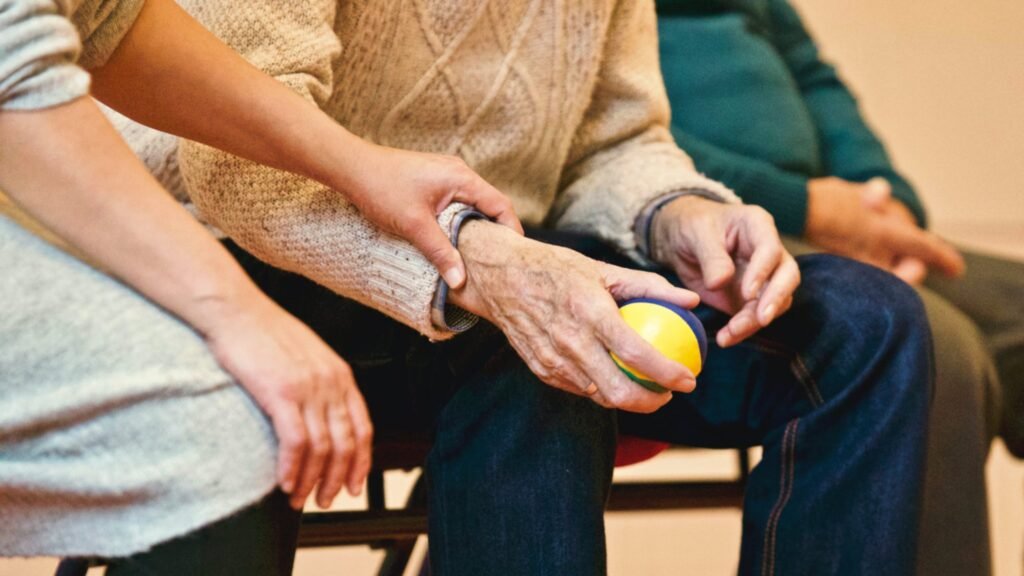Elderly safety alarms are a proactive measure, enabling seniors to lead fuller, more secure lives while offering a sense of security to those responsible for their care.

Elderly safety alarms play a pivotal role in ensuring the well-being and security of seniors, offering a lifeline during emergencies. These alarms are more than just devices; they are a means of providing immediate assistance and peace of mind, both for the elderly individuals and their families or caregivers.
The importance of these alarms lies in their ability to swiftly summon help in critical situations. For seniors living independently or aging in place, these systems act as a safety net, providing an immediate connection to emergency services or designated contacts in times of distress.
Understanding Elderly Safety Alarms
What are Elderly Safety Alarms?
Elderly safety alarms encompass a range of devices tailored to protect seniors in emergencies. These devices, including wearable gadgets, home safety systems, and GPS trackers, offer swift access to assistance. National Institute of Health (NCBI) reports that there are 1.5 to 2 million older individuals are treated annually in emergency departments for fall injuries. Elderly safety alarms act as crucial tools, providing immediate aid and potentially saving lives in critical situations.

Types of Safety Alarms for the Elderly
Elderly safety alarms encompass a diverse array of innovative devices specifically designed to cater to the unique needs of seniors. These systems offer various forms of protection, ensuring rapid assistance during emergencies and enhancing overall safety and peace of mind.
- Personal Alarm Systems: These compact devices are equipped with panic buttons or triggers that seniors can activate in distress situations. They establish an immediate connection to emergency services or designated contacts, facilitating swift assistance.
- Home Safety Alarms: These encompass a range of systems installed within the home environment, including fall detection sensors, smoke and carbon monoxide detectors, and motion sensors. These devices aim to prevent accidents and notify caregivers or emergency services in case of an incident.
- Wearable Safety Devices: These gadgets, often in the form of wristbands or pendants, offer mobility and convenience. They are equipped with various safety features like GPS tracking, fall detection, and emergency call buttons, allowing seniors to carry safety measures wherever they go.
- GPS Trackers for Seniors: Specifically designed to track the location of seniors, these trackers provide real-time information on their whereabouts. They offer peace of mind to caregivers and ensure quick assistance in case a senior wanders or gets lost.

Each type of safety alarm caters to different aspects of elderly care and safety, emphasizing the importance of a multi-layered approach to safeguarding seniors in various situations and environments. These devices serve as invaluable tools in ensuring the well-being and security of elderly individuals, providing them with a safety net and support system in times of need.
Importance and Benefits of Safety Alarms for Elderly Individuals
Safety alarms for elderly individuals hold immense significance in safeguarding their well-being and ensuring immediate assistance during critical situations. The importance and benefits of these alarms are multifold:
- Emergency Response: These alarms offer a direct line to emergency services or designated contacts, enabling swift response during falls, health emergencies, or instances of distress, potentially reducing response time and severity of incidents.
- Independence and Confidence: For seniors living independently, safety alarms provide a sense of security, fostering confidence in their ability to handle daily activities without the constant fear of being alone in case of an emergency.
- Peace of Mind: Both for seniors and their families, these alarms offer reassurance. Family members gain peace of mind, knowing that their loved ones have access to immediate help, while seniors feel more secure and less anxious about potential emergencies.
- Enhanced Safety Measures: These devices are equipped with features such as fall detection, GPS tracking, and connectivity options, ensuring comprehensive safety measures tailored to the specific needs of elderly individuals.
- Aging in Place: Safety alarms enable seniors to remain in their homes longer, supporting aging-in-place strategies by providing a safety net that promotes independence while ensuring rapid assistance if needed.
- Reduced Caregiver Stress: Caregivers can have confidence in the safety measures put in place, reducing their stress and allowing them to offer support without constant concern about their loved one’s safety.
In summary, the importance and benefits of safety alarms for elderly individuals are instrumental in not only ensuring immediate assistance during emergencies but also in fostering independence, confidence, and overall peace of mind for both seniors and their caregivers.
How Elderly Safety Alarms Work?
Mechanism and Functionality of Personal Alarms for the Elderly
Personal alarms for the elderly function through compact devices equipped with panic buttons or triggers. When activated, they establish a direct link to emergency services or designated contacts. This immediate connection enables swift response and aid during emergencies, ensuring rapid assistance for seniors in distress.
Features and Components of Safety Alarms
Elderly safety alarms are equipped with several essential features and components designed to ensure swift assistance and comprehensive protection for seniors.
- Panic Buttons: These compact buttons, often integrated into wearable devices or home systems, allow immediate activation during emergencies. Seniors can press these buttons to quickly alert monitoring centers or designated contacts, summoning help when needed.
- Monitoring Centers and Response Systems: Most safety alarms are linked to monitoring centers equipped with trained professionals who respond promptly to distress calls. These centers coordinate emergency services or alert family members to ensure rapid assistance.
- Connectivity Options (e.g., cellular, Wi-Fi): Safety alarms utilize various connectivity modes such as cellular networks or Wi-Fi, ensuring seamless communication between the alarm device and monitoring centers. This diverse connectivity enables consistent and reliable operation, regardless of location.
Practical Examples of Usage: For instance, a senior experiencing a fall at home can trigger their personal alarm, activating a response from a monitoring center. Emergency services are then dispatched promptly. Similarly, wearable safety devices can track a senior’s location, allowing caregivers to swiftly locate them if they wander or get lost.
These features and components collectively form a robust safety net for elderly individuals, ensuring immediate response and support during emergencies while enhancing overall safety and peace of mind for both seniors and their caregivers.
Key Considerations When Choosing an Elderly Safety Alarm
- User-Friendly Design: Opt for alarms with intuitive interfaces and easy-to-operate features. Elderly individuals benefit from simple, clearly labeled buttons and devices that are comfortable to wear or install.
- Reliability and Durability: Choose alarms known for their reliability and robust build. Ensuring the device can withstand daily use and potential emergencies is vital to maintain functionality when needed.
- Range and Connectivity: Assess the alarm’s range and connectivity options. A wider operational range allows seniors to move freely while staying connected to monitoring centers or responders. Ensure it offers seamless connectivity, whether through cellular networks or Wi-Fi.
- Subscription Costs and Service Plans: Understand the subscription model and associated costs. Evaluate service plans that align with the level of protection required and fit within the budget. Look for transparent pricing structures without hidden fees.
Prioritizing these factors helps in selecting an elderly safety alarm that best suits the senior’s lifestyle, ensuring it offers reliable, user-friendly, and cost-effective protection, ultimately contributing to enhanced safety and peace of mind.
How to Use Elderly Safety Alarms
- Setting Up and Activating Safety Alarms: Begin by carefully following the manufacturer’s instructions to set up the alarm system. Ensure proper installation of home safety alarms or wearing wearable devices correctly. Test the alarms regularly to ensure they’re in working order and activated in case of emergencies.
- Tips for Seniors on Effective Usage: Familiarize seniors with the alarm’s functionalities and buttons. Encourage them to wear or keep the device within reach at all times. Practice using the alarm to reinforce its activation process and reassure them about its reliability.
- Educating Caregivers and Family Members: Train caregivers and family members on the alarm’s usage and response procedures. Ensure they understand how to respond when alerted, including contacting emergency services or the monitoring center. Regularly update them on any changes or additional features of the alarm system.
By implementing these steps, seniors can confidently use safety alarms, and caregivers or family members can effectively assist in emergency situations, ensuring a swift and appropriate response when needed. This knowledge fosters a sense of security and reliability in the alarm system, contributing to overall safety for elderly individuals.
The Role of Safety Alarms in Elderly Care
- Enhancing Independence and Security for Seniors: Safety alarms provide a crucial layer of support, allowing seniors to maintain independence while ensuring immediate assistance during emergencies. With these alarms, seniors feel empowered to continue living an autonomous lifestyle, knowing help is just a button press away.
- B. Support for Aging-in-Place Strategies: Safety alarms enable aging individuals to remain in their homes longer, supporting aging-in-place strategies. These devices offer reassurance to seniors and their families, making it feasible for seniors to stay in familiar environments while being connected to emergency assistance.
- C. Impact on Caregivers and Peace of Mind for Families: Safety alarms alleviate caregiver stress by offering an extra layer of protection for seniors. Knowing that their loved ones have access to immediate help gives families peace of mind, reducing anxiety about potential emergencies and ensuring a safer environment for their elderly family members.
Overall, safety alarms play a pivotal role in promoting independence, providing a safety net for aging individuals, and easing the concerns of caregivers and families, ultimately contributing to a higher quality of life for seniors while ensuring their well-being and security.
Real-Life examples
Realizing the importance of alarm bells in west Delhi, police distributed 400 alarm bells to senior citizens who are staying alone.
- Recap of the Importance and Benefits of Elderly Safety Alarms:Elderly safety alarms are indispensable tools ensuring immediate aid during emergencies, fostering independence, and offering peace of mind to seniors and their caregivers. Their significance lies in providing swift assistance, enhancing safety, and supporting aging-in-place strategies, contributing to a higher quality of life for seniors.
- Encouragement for Seniors and Caregivers to Embrace Safety Alarms:For seniors and caregivers, embracing safety alarms means embracing enhanced safety and security. Seniors gain autonomy and assurance, while caregivers experience reduced stress. Embracing these devices strengthens the safety net, ensuring rapid response during emergencies and supporting a more independent lifestyle for seniors.
- Final Thoughts on the Role of Technology in Elderly Care:Technology, especially safety alarms, revolutionizes elderly care by bridging the gap between immediate assistance and independence. It empowers seniors, offering them a reliable safety measure. As technology evolves, it continues to play a pivotal role in reshaping elderly care, emphasizing the importance of integrating innovative solutions to cater to their specific needs and well-being.

Conclusion:
In conclusion, embracing safety alarms isn’t just about adopting a device; it’s about embracing enhanced safety, independence, and peace of mind for seniors and caregivers, showcasing the transformative role of technology in shaping a safer and more supportive environment for the elderly.


